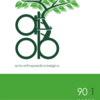Cubital tunnel release with Wide Awake Local Anaesthesia No Tourniquet (WALANT) technique in an outpatient setting is safe and effective
Wide Awake Local Anaesthesia No Tourniquet (WALANT), cubital tunnel syndrome, ulnar nerve release
Published online: Apr 23 2024
Abstract
Ulnar nerve release is often performed under general anaesthesia. Wide Awake Local Anaesthesia No Tourniquet (WALANT) is a new anaesthetic method increasingly used by hand surgeons in an outpatient setting. It has advantages such as the possibility to shift surgical interventions out of the regular surgical theatre settings into an outpatient clinical setting, no risk of complications or side effects resulting from regional and general anesthesia and decreased costs. The use of WALANT has not been investigated extensively in elbow surgery. This study aims to evaluate clinical outcomes after ulnar nerve release under WALANT 27 patients with ulnar nerve release for cubital tunnel syndrome were included. The primary outcome was the presence of (remaining) symptoms after ulnar nerve release. Data was extracted from medical records. 13 out of 27 patients had (mild) remaining symptoms after ulnar nerve release, and 1 complication (superficial wound infection) was seen. Ulnar nerve release under WALANT is safe and effective in patients with primary ulnar nerve entrapment that have failed conservative therapy.
